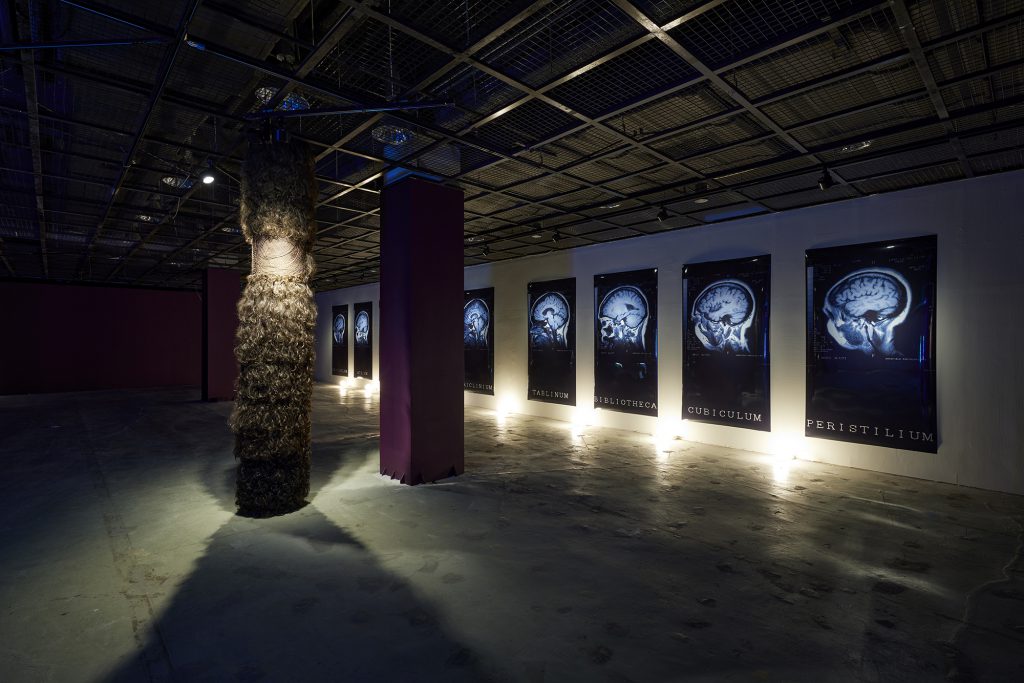
Vivian Lynn, Caryatid, 1986; Spin: Versor Versari, 1995–97
Vivian Lynn, Caryatid, 1986; Spin: Versor Versari, 1995–97

The term caryatid originates in the cult of Carya, later associated with Artemis, who was venerated as the goddess of the nut tree in pre-Classical Greek rituals. Inspired by a visit to Hadrian’s Villa near Rome, Vivian Lynn’s Caryatid (1986) is a hair-clad, freestanding column drawn from the classical caryatids that refer to sites dedicated to female deities, like the ceremonial pole of the Canaanite mother goddess Asherah. For its first exhibition in 1986, Lynn installed Caryatid adjacent to a concrete pillar that was part of the Wellington City Gallery’s architecture, eliciting a play between the gendered canons of modernist architecture and the matriarchal lineage of the sacred tree of life, the Babylonian goddess Ishtar, and dilukái figures from Palau. Lynn was among the first artists in Aotearoa, New Zealand, to apply feminist deconstruction to conceptual practices and to the critique of the patriarchal biases inherent in modernism, which manifested in the use of female hair, pharmaceuticals for skin treatment, and damaged tapa, a ceremonial bark cloth made by women of the Pacific islands. The latter put Lynn’s work at the center of an unresolved controversy among those who saw the “revindication” of destroyed tapa as a form of healing or restoration of women’s labor and those who criticized it for appropriating the aesthetic potential of the material by the white imaginary.
Pushing the canon of self-portraiture to formulate a critique of Western logocentrism, Spin: Versor Versari (1995–97) is a series of nine blown-up MRI scans of the artist’s brain that reflects on spaces of interiority and exposes the matter-of-fact inconsistency between the Cartesian ego and the perception of self-identity. With references to the rooms of the Villa of Mysteries, which Lynn saw in Pompeii in 1992, the work embodies intelligence as opposed to the pure disembodied reason in the private domain of the Roman house. The title, a reference to forms of dualism promulgated by quantum mechanics, is a meditation to overcome the idea of a stable and immutable notion of the self towards what Lynn described as “a corporeal, visceral, neural, erotic mind-self in the world, where identity emerges, ebbs, flows, and mutates from behavior in the lived space we inhabit.”
Vivian Lynn, Caryatid, 1986; Spin: Versor Versari, 1995–97